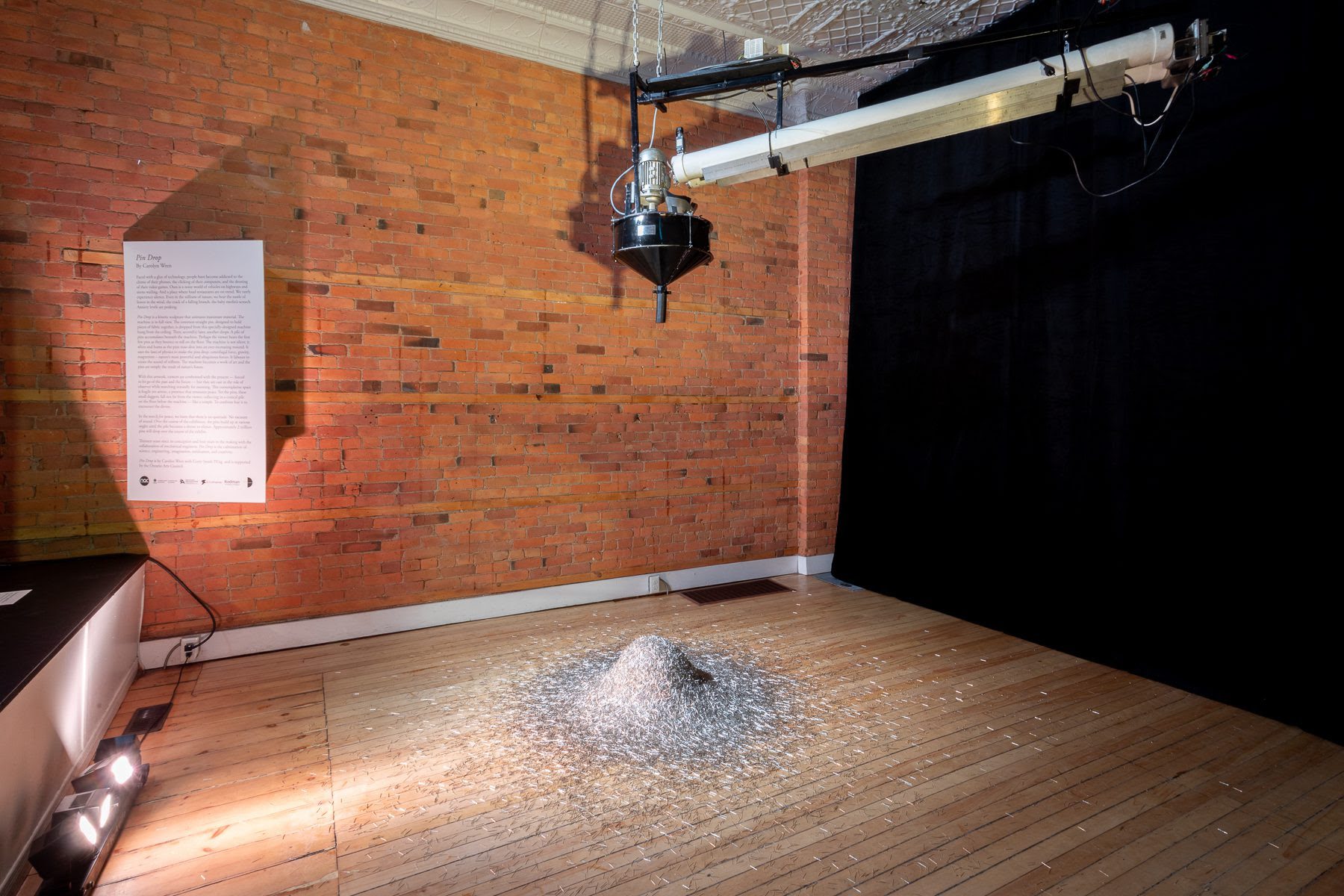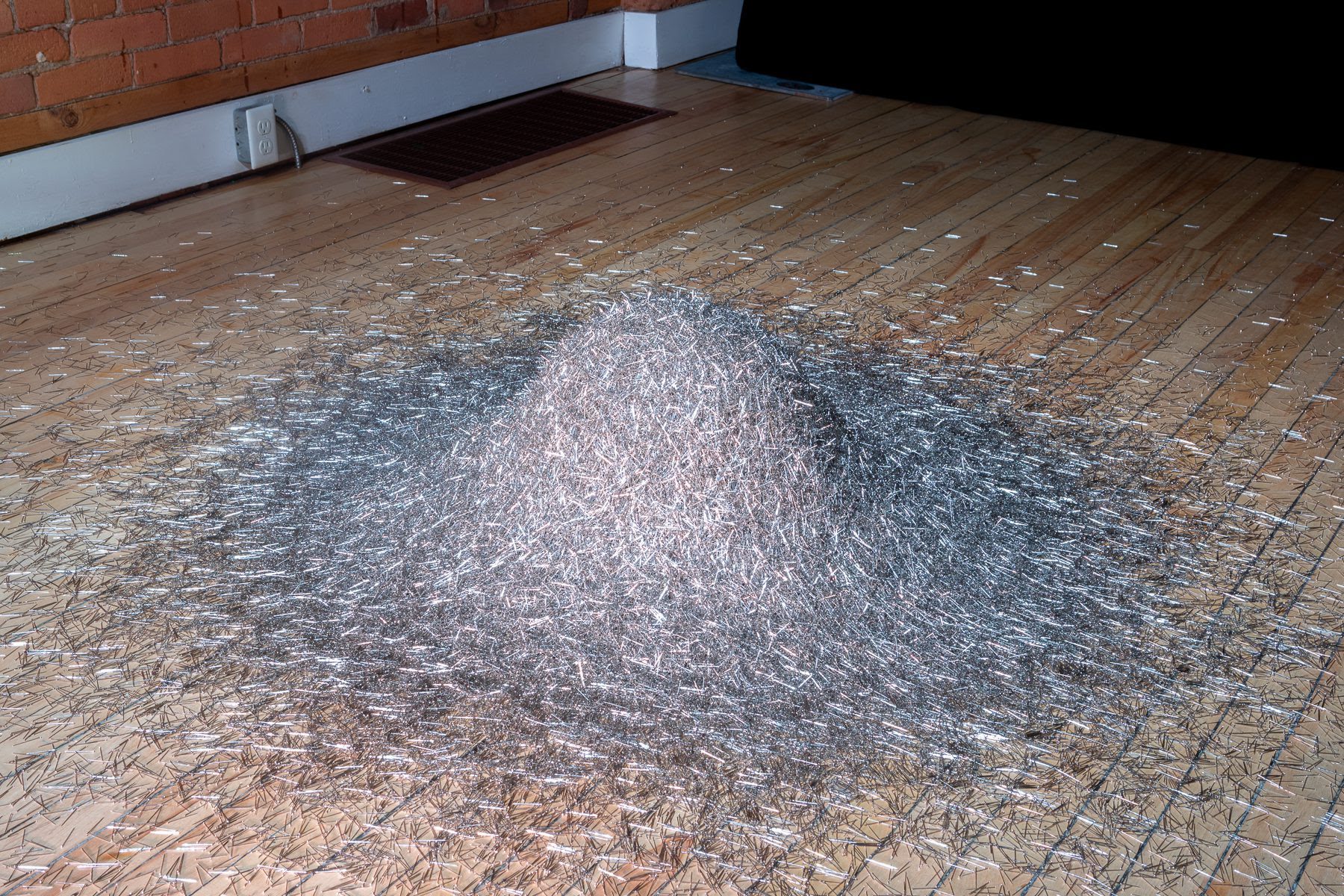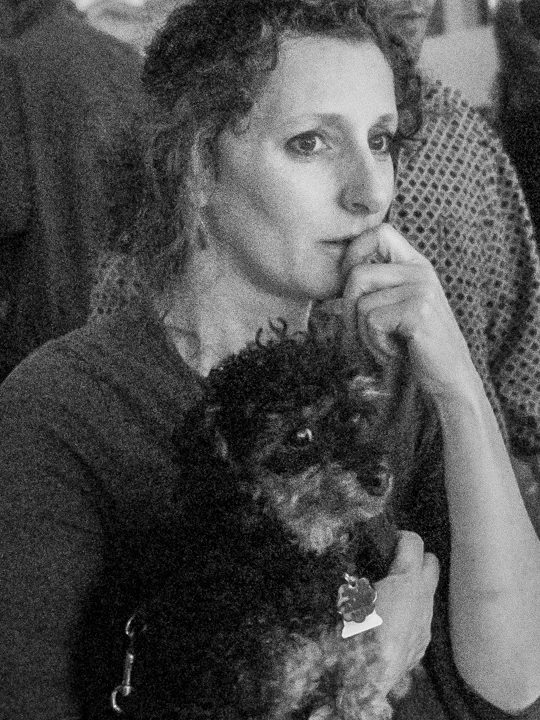
CAROLYN WREN
25 August 1961 – 2 February 2024
Carolyn Wren, well-known and much beloved Niagara artist, has died.
Our hearts go out to her family and friends.
In her last days, NAC was honoured to help Carolyn realize her dream of exhibiting Pin Drop, a machine that dropped hundreds of thousands of straight pins individually.
What follows are three pieces of writing about that exhibit by members of NAC.
Carolyn’s obituary can be read here.
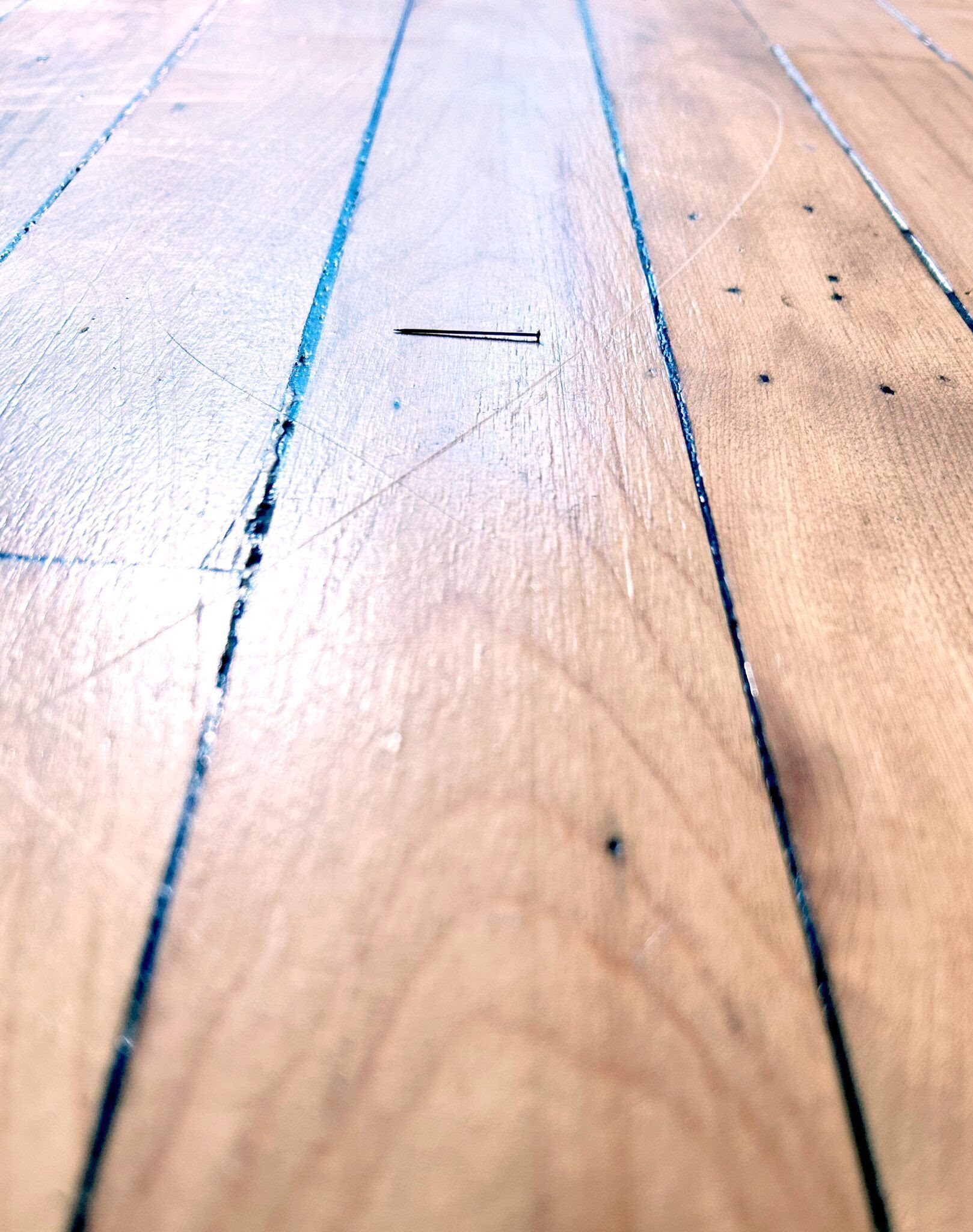
julia blushak, 29.01.24
night falls
the stars pour
like milk infinite
without edges
it’s time you
turn over
to learn to trust
every stone scattered
for a path
be lit again
let the night
follow you
home.
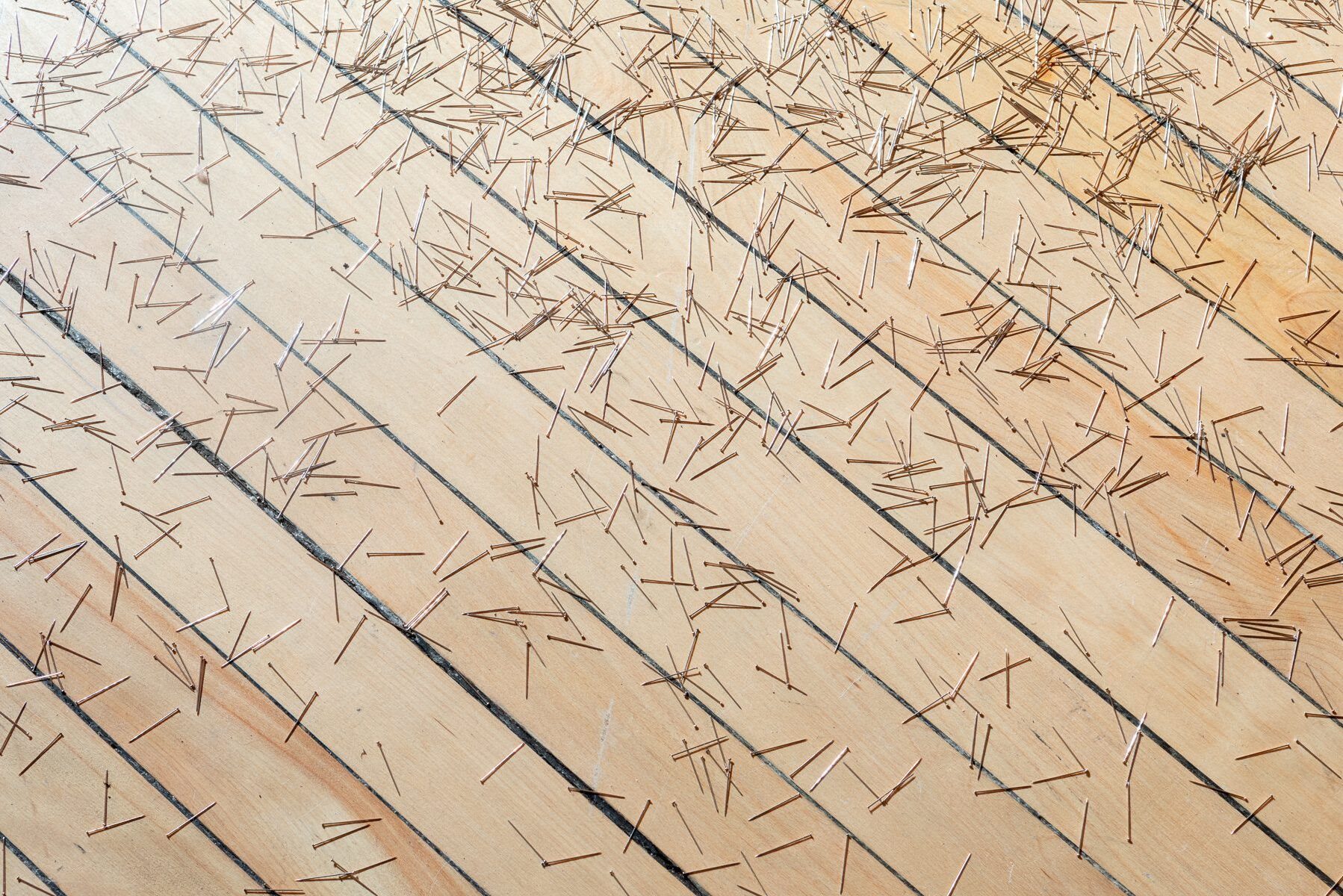
My baby sparkle and shine
Sparkle and shine
Sparkle and shine
My baby sparkle and shine
And everyone knows she’s fine
– Steve Earle
Driving past a cemetery at night your headlights are liable to land on the polished granite surfaces of a row of tombstones. The effect can be sublime, quick winks of light bouncing off markers of lives past. It’s the stuff of adolescent epiphanies and romantic musings about the brevity of our time alive, imbuing breezy cliches about how life passes in a flash with suddenly renewed weight. Carolyn Wren’s Pin Drop installation endeavours to hold us in that contemplative space and welcomes us to explore it.
Wren was originally inspired to make the pin drop machine—becoming somewhat of an obsession for her for more than a decade—under the immense pressure of caring for a partner diagnosed with a terminal disease and navigating similar challenges to her own well-being. Wren wanted to create a machine to answer her wish for peace, the state of quiet and stillness epitomized by being able to hear a pin drop. As a high school teacher it was an expression she often used to settle her class, I want it so quiet in here I can hear a pin drop! Anyone who has ever attempted to bottle up the energy of a room full of students knows the futility of this. It may be achieved, but it’s sure to be brief.
Like so much of Wren’s formidable body of art making—encompassing printmaking, textile art, installation, and word-based and video works—Pin Drop has this baked-in Sisyphean element. One of her projects directly addresses the myth of Sisyphus and the futility of labour. In a short video, we watch Wren repeat the effort of carrying stones up a steep wilderness trail. Riffing on Albert Camus’ assertion that we should imagine that there is happiness in Sisyphus’ life because his labour provided him time to contemplate the absurd, Wren quotes, “The struggle itself toward the heights is enough to fill a man’s heart.”
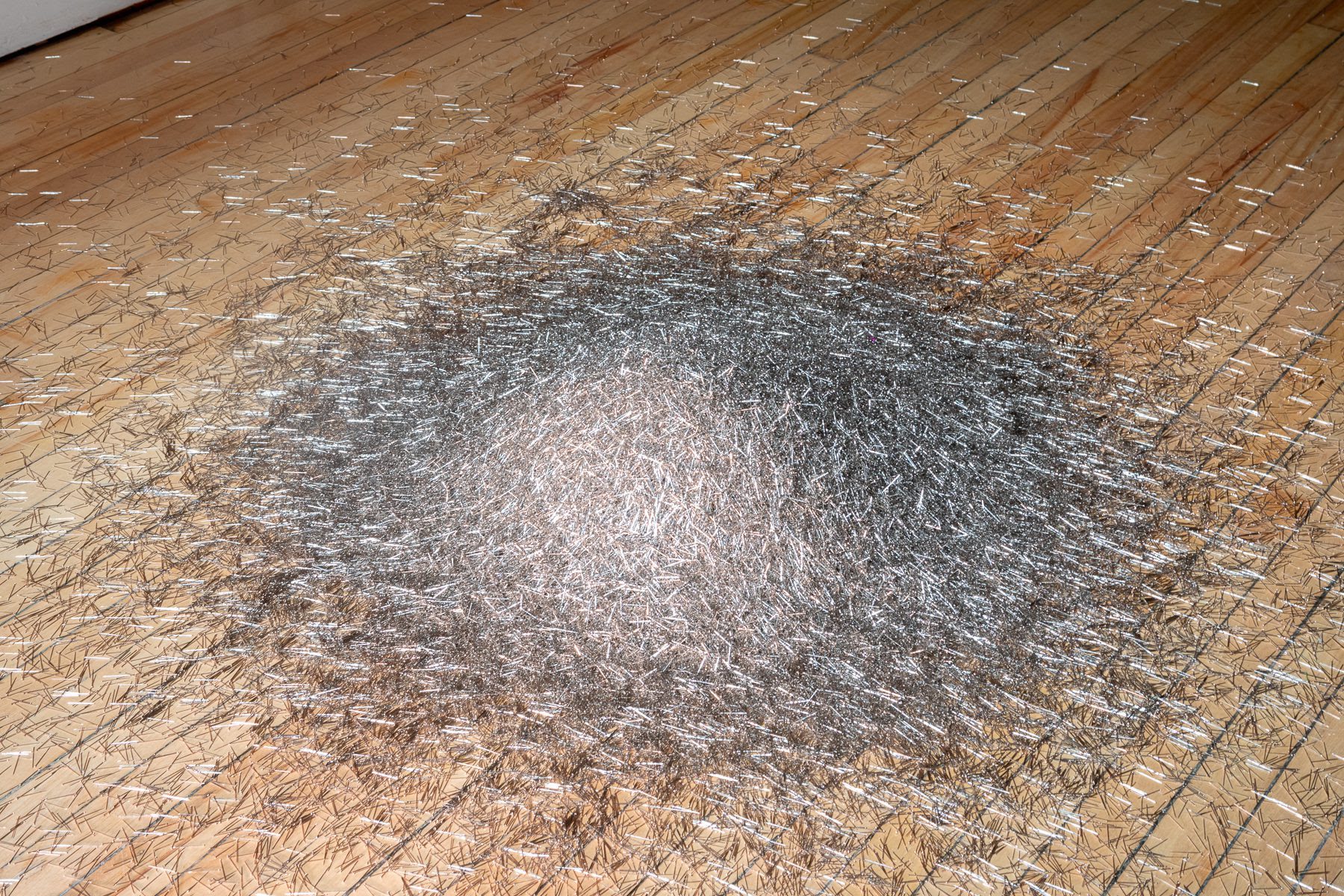
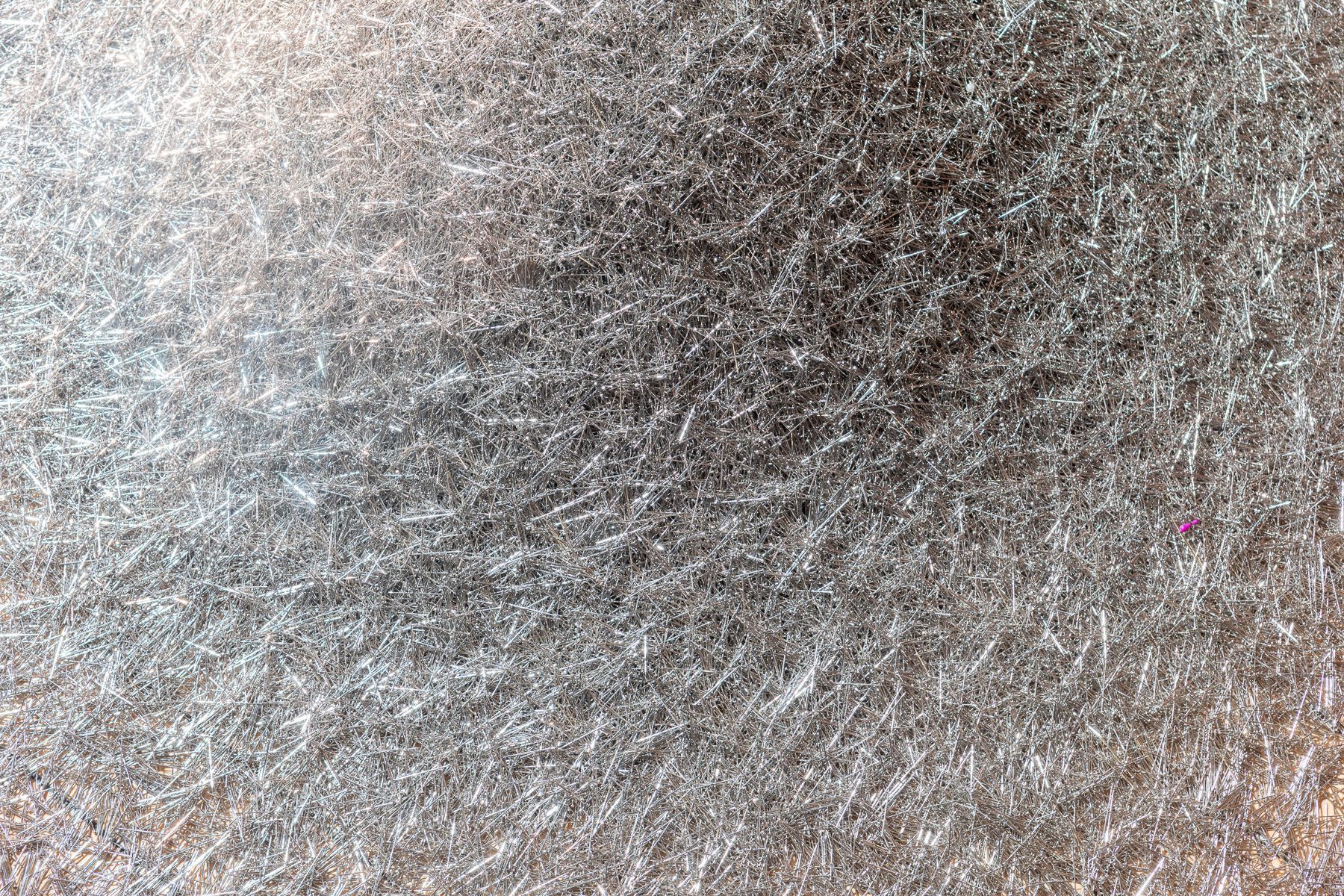
The Pin Drop machine offers yet another deep truth. The ever-philosophical Greeks devised ‘deus ex machina’ as mechanical devices to suddenly deliver actors as gods onto the stages of tragic and comedic dramas in order to surprise audiences into a state of wonder. And so, Wren’s pin drop machine was similarly created to provide us with a pause for thought, but to tune ourselves to the silence and emptiness we inhabit. Wren’s machine toils to provide some resolution of our human mortal experience. A kind of grace is possible if we can behold the manifestation of a single pin as a marvel in itself.
The pin drop machine was designed and constructed by Cory Smith, an engineer who spent four years working with Wren to solve the many riddles of making an apparatus to sort and drop over a million individual stainless steel straight pins in sequence. It arrived for its first installation in a storefront in downtown St. Catharines just as Wren’s health was fading and she began describing how realizing the Pin Drop project was her “dying wish.”
The machine attempts to produce a regular stream of pins that fall to the floor in increments of a second or two. But the pins don’t always cooperate, the limitations of the machine causing them to fall sometimes with gaps of ten seconds or more between them, sometimes dropping them in bunches of twos and threes, and sometimes in a cavalcade. It’s impossible to avoid comparing the pin drop machine to an hourglass—the pins like the grains of sand—an allegory for our days. But isn’t the sporadic dropping of the pins more like how our days actually pass? Not in the mathematical perfection of the hourglass but with some days dragging like you’ve got mud stuck to your boots, others disappearing like deer bounding over a hill.
Initially, Wren tasked the engineer to build a machine to drop pins silently and be hidden out of the sight of gallery viewers. The engineer incorporated sound deadening material and thought was given to enclosing the entire machine to conceal its workings. However, as it took physical form, Wren decided the machine had earned its place as part of the installation and that it should be heard and seen.
Unexpectedly, the machine makes a clearly recognizable breathing sound. Sorting the pins using centrifugal force, the whir of the variable frequency motor combined with the swish of the pins rushing across the surface of the centrifuge mimic the cycle of inhaling and exhaling. The breaths are steady and mechanical and, as one viewer described it, like an iron lung.
The breathing of the machine further ties the work to meditative states of being where philosophy and spiritualism intersect. Consider the pins dropping as breath passing. As breath made physical, the pins reflect how contingent our experience of reality actually is. Each breath, as fleeting as a pin drop, briefly holds our awareness of lived experience. Wren’s machine is another teaching lesson in a life filled with sharing them. It demonstrates how reality is empty of intrinsic meaning. Wren invites us to pay attention.
Within many eastern beliefs such as Hindu and Buddhist practices the stainless void represents a state of perfect quietude and liberation. In the void we are liberated from the striving that is at the root of worldly suffering. Wren, who spends time with the pin machine in the evenings, commented how the shining stainless pins are colourless yet they reflect all the colours of the world around them. As the collection of pins mounds into a type of stainless void of her own creation—and as she watches it sparkle and shine—she tells us that the sight of it brings her joy.
– Stephen Remus
with thanks to Julia Blushak
29 January 2024
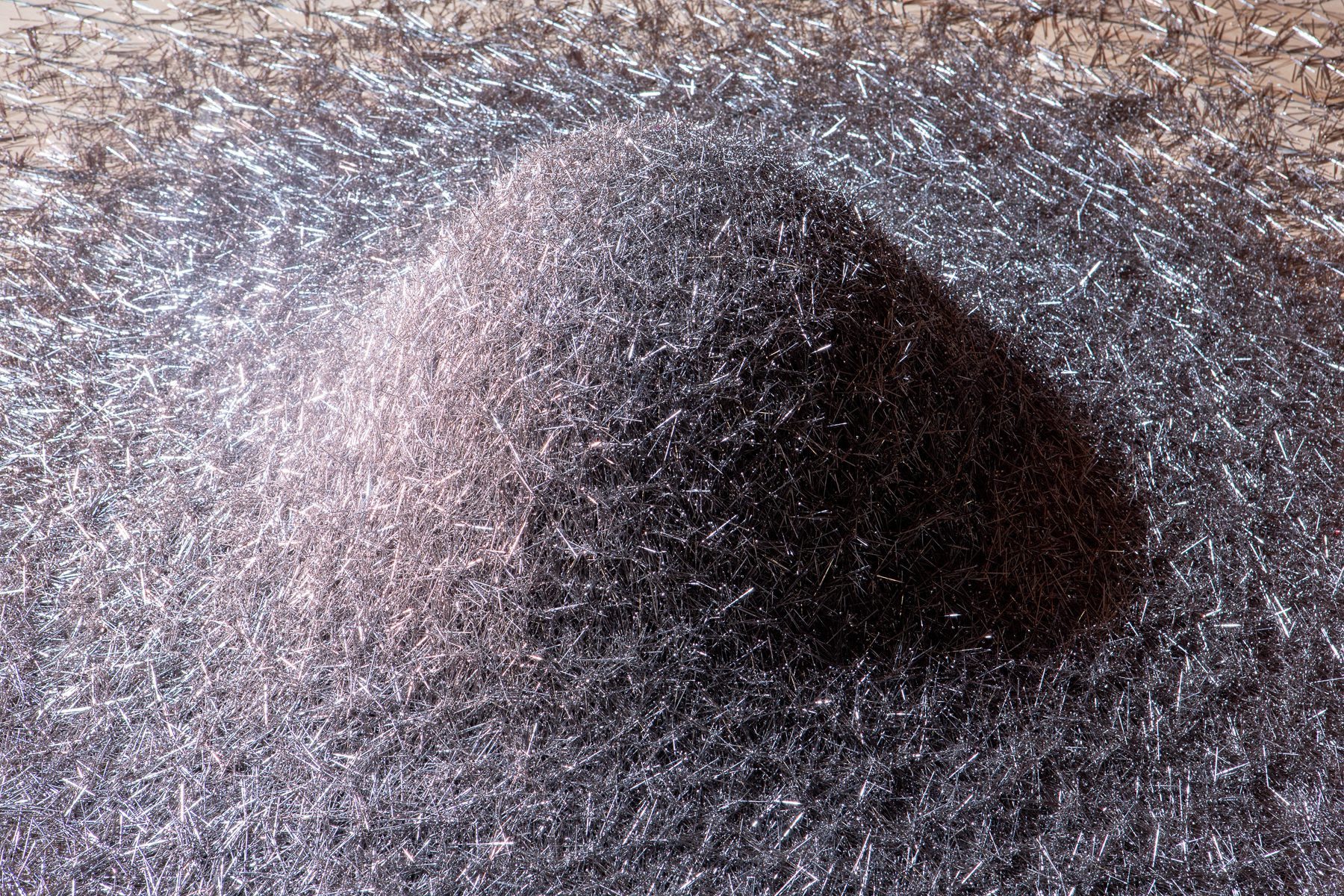
Pin Drop notes
It’s hard to look at all the pins at once—it’s kind of blinding which is surprising for something mainly grey.
Between breaths, the machine quiets for a half-second. Do you have anything left to say? We wait in wonder.
I think about February and dream of a hill of quiet steel that I could crawl into and close my eyes.
A kid asks, can we go soon? And his mother says, not yet, hun, this is important to me.
A machine and an old friend are breathing together—what could words say?
She makes it a game of catching the pin drop and in this small room a child gets excited about something newly big.I watch them not say much. I watch them really watch.
Silence is elusive.
Did you see one fall?
I just saw a glimpse of a pin becoming a pile.
Silence is illusive.
How do I, in a conscious state, hunger for something I’ve never consciously experienced?
The white noise, the brown noise, the rain sounds to aid sleep… when I have the option for some quiet, I choose to wedge the speaker end of my phone between the pillow and my ear.
The Pin Drop is loud enough to fill this room, but it’s the quietest place in this city.
The Pin Drop, just as it can breathe, can sense your overthinking. It withholds its offerings when you are holding your breath, when you’re all in your head, when you are not meeting its standards of feeling.
There is so little song after the rush of New Years, there are so few birds in this brutal cold. This January was different and rather compassionate.
– Sahar Saeidi
29 January 2024
